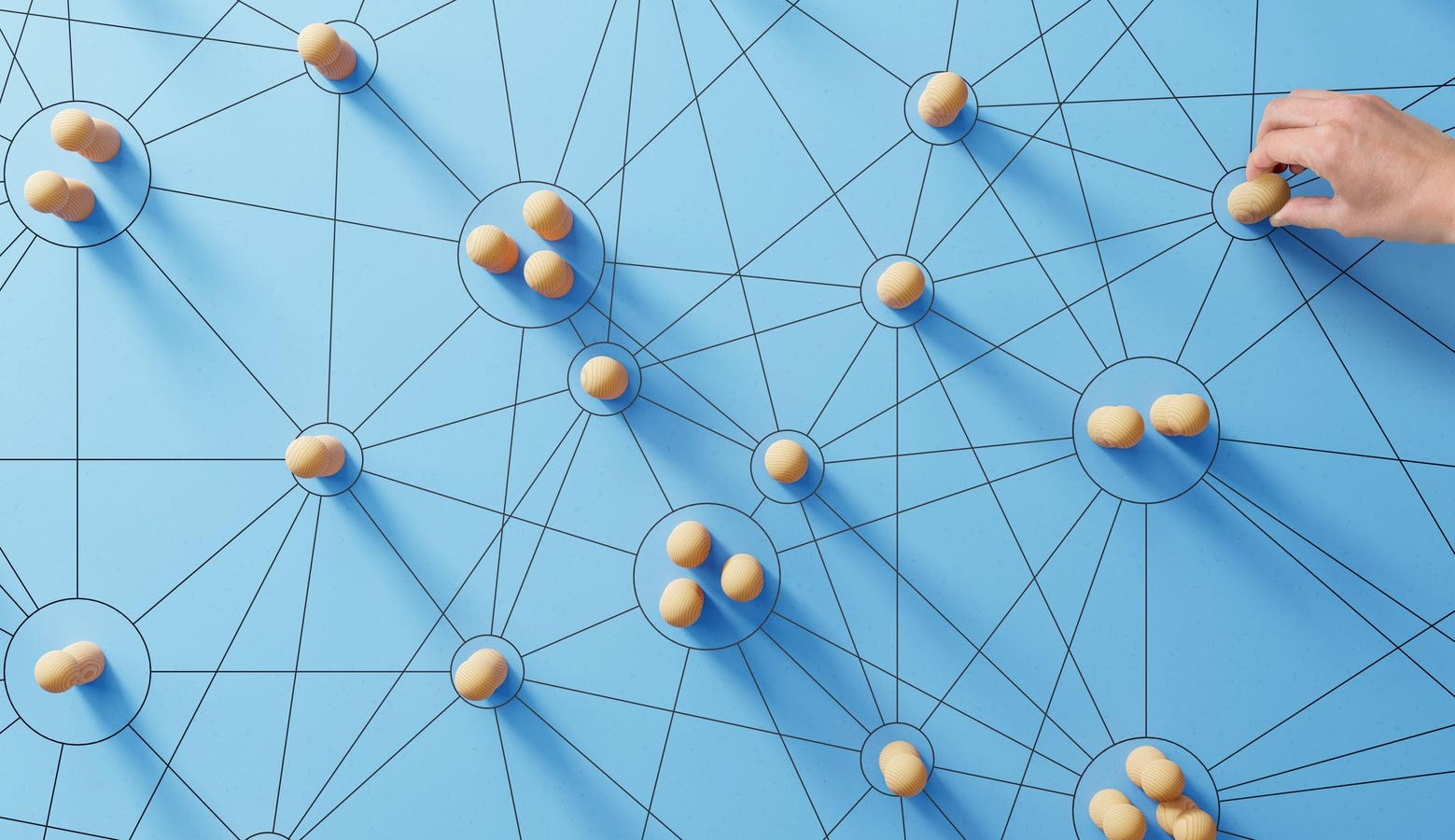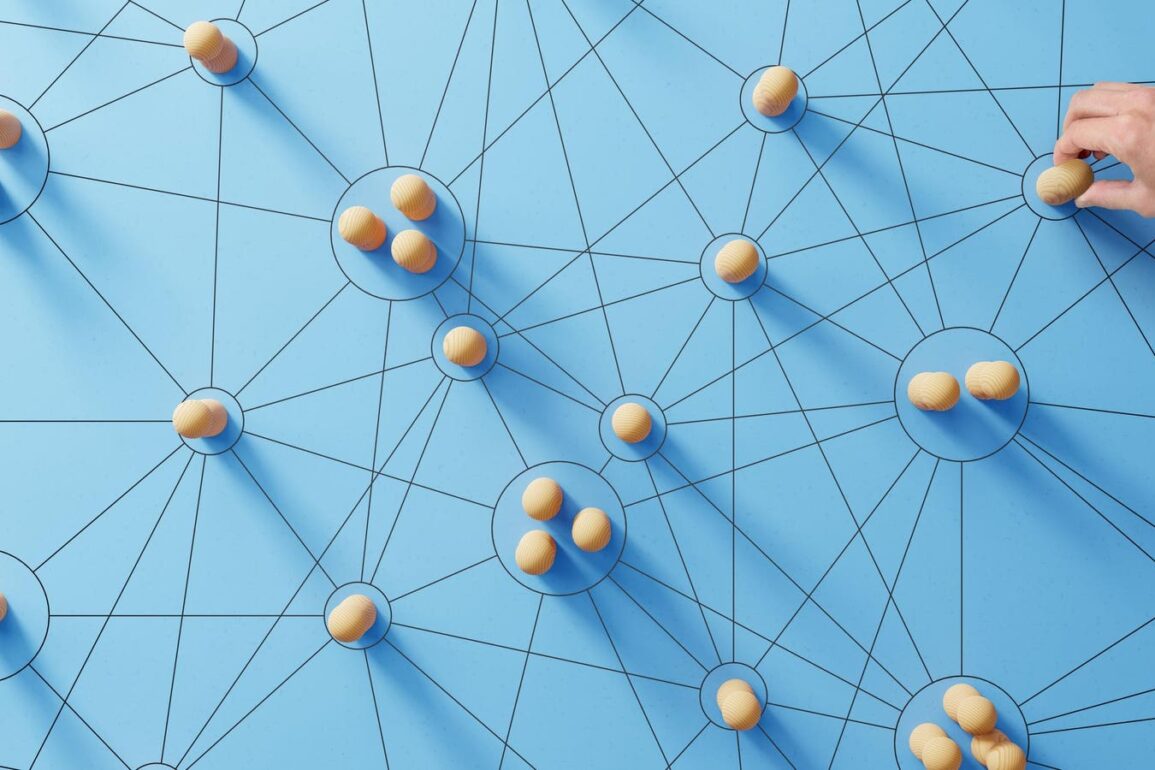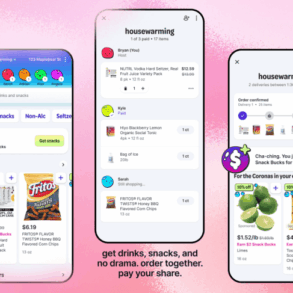
In today’s digital landscape, where apps promise to connect you with quality contacts on LinkedIn for as little as two cents each (yes, it’s true), it’s all too easy to be seduced by the allure of quick networking solutions. But many of these so-called connections end up being nothing more than bots—missing the warmth and authenticity of real human interaction and offering even less value than the two cents required to secure them.
In contrast, strong and reliable connections have the potential to truly transform your life, career, and professional journey. These meaningful relationships can open doors, provide support and inspire growth in ways that superficial connections simply can’t match.
Consider the story of Tom, a promising leader with a mind full of innovative ideas. Tom’s concepts had tremendous potential, yet he found it challenging to build a supportive network around him. His brilliance was never in question; rather, it was his reluctance to embrace a truly collaborative spirit that held him back. Without a community of allies to champion his vision, his passion for change went largely unnoticed. After all, as the saying goes, “No man is an island,” and this especially rings true in leadership.
When It Comes To Connections, Quality Trumps Quantity
Quick question: out of all your professional connections, how many would you consider to be high-quality? These are the valuable relationships that truly help you grow, offer new perspectives and support your goals. Is it about 5%, 10%, 20%, maybe even 50%?
Research suggests that humans can maintain around 150 stable relationships (check out Dunbar’s Number). However, when it comes to our inner circle of close, high-quality connections, that number drops to about 5 to 15 people. So, we’re talking roughly 3% to 10% of your connections being truly valuable.
There are other theories too—the tightest circle has just five people: your immediate family and loved ones. That’s followed by successive layers of 15 (good friends), 50 (friends), 150 (meaningful contacts), 500 (acquaintances), and 1,500 (people you can recognize). Yes, there are people on your social media networks who might pass you by on a busy street without you even noticing.
But do more connections necessarily mean that people thrive? An interesting study by Gallup in collaboration with Meta showed that while 72% of people globally felt “very connected” or “fairly connected” to others, 24% also reported feeling “very lonely” or “fairly lonely.” The internet has narrowed distances and expanded networks, but has that necessarily meant an increase in genuine, authentic relationships?
What’s clear is this— In today’s increasingly hyper-connected world, it’s not just about having more connections; it’s about having better ones. These core relationships can serve as bridges to larger networks, opening doors to even more valuable opportunities and insights.
By focusing on nurturing these high-quality connections, you can significantly enhance your professional journey. What’s more, research consistently indicates that leaders with strong, quality networks are more effective. These leaders not only access diverse perspectives but also garner the support needed to execute their visions.
You Are Who You Know
Our identity and sense of belonging are deeply influenced by the company we keep. In both our personal and professional lives, the relationships we nurture enrich our experiences, provide comfort during challenging times and create an environment where we can learn, grow and thrive. However, many relationships are often formed by chance rather than through intentional choices.
In social psychology the concept of “propinquity” suggests that physical or psychological closeness fosters relationship formation. A notable study, the Westgate study conducted at MIT, found that people are more likely to befriend those who live nearby—especially next-door neighbors or those who share common spaces like stairwells—because they have more opportunities for casual encounters. This means that many of our connections arise from unplanned interactions rather than deliberate efforts to build relationships.
Yet, this phenomenon has its downsides. The social proximity bias can lead us to perceive those closest to us—both physically and emotionally—as more trustworthy and reliable. We tend to seek their advice more often, rely on them for information and collaborate with them more readily. This can create in-group and out-group dynamics, leading to siloed thinking.
If our identity is shaped by those around us, then the influence of our close connections can significantly impact our opinions, viewpoints, and decisions. In the process, we risk missing out on diverse perspectives and valuable insights from others who might offer better information or innovative ideas that could truly benefit us.
Mapping Your Network
A powerful way to enhance your network is to start by truly understanding it. Your network is not static; it’s an ever-changing, organic entity that evolves as you move through different stages of life. From your early education to your first job and beyond, your connections expand, contract and adapt. Geographic moves, new jobs or shifts in profession can dramatically reshape your personal and professional landscape.
future technology, tablet pc side view, world map background
One effective way to visualize your network is through social network analysis or mapping. This technique allows you to map out your relationships, illustrating how you connect with others and how information or support flows between them. It helps you identify strong connections, weak ties and key influencers in your circle.
Six Core Connections To Elevate Your Impact
As you consider nurturing your networks, the principles of social network mapping can be incredibly valuable. One effective method is to conduct a social network analysis (SNA), which typically involves sending out a survey and analyzing the results with user-friendly software like Gephi. This approach can be applied to a team, a division, or even an entire organization.
However, let’s simplify this process by categorizing individuals in your network using basic SNA terminology. By identifying people as influencers, connectors, bridges, gatekeepers, brokers and opinion leaders, you can gain insight into their unique roles and contributions. As you read and reflect, have a person (or more) in your mind.
1. Influencer (The Trusted Voice)
Reflections: Who do people listen to and respect the most in your circles? Who shapes opinions, trends or conversations in your personal or professional community?
Engagement: Follow their work, engage with their content and offer value by sharing insights or helping with their projects. An influencer can amplify your message and lend credibility to your work.
2. Connector (The Human Bridge)
Reflections: Who seems to know the right people for different opportunities? Who frequently introduces others to one another?
Engagement: Share your current projects with them and ask if they know anyone who could help. Invite them to networking events, where they typically thrive. Bring connections to them. For them, connections are currency.
3. Bridge (The Cross-Community Link)
Reflections: Who belongs to multiple different groups and moves effortlessly between them? Who can connect you to people outside your usual circles?
Engagement: Ask for introductions to people in other communities or collaborate on projects that require diverse perspectives. Having powerful bridges is key to tapping into new parts of the organization, or breaking through difficult and challenging silos.
4. Gatekeeper (The Information Curator)
Reflections: Who controls access to opportunities or important information? Who decides what information gets shared within your community?
Engagement: Earn their trust by demonstrating your value and showing appreciation for the opportunities they provide. They also require something tangible from you — so always be clear about mutual benefits and partnership opportunities.
5. Broker (The Deal Maker)
Reflections: Who often acts as a middleman, facilitating deals or partnerships? Who has connections across industries?
Engagement: Offer win-win collaborations and stay in touch to keep them updated on your skills and projects.
6. Opinion Leader (The Trusted Guide)
Reflections: Who do people turn to when they need guidance or expertise? Who shares thought-provoking insights?
Engagement: Seek their advice, support their work and share insights that complement their expertise. Opinion leaders seek influence and will value help in having their voices amplified in hard-to-reach corners of your organization.
As you identify these different roles within your network, take a moment to reflect on your own role. What position do you naturally occupy in your network? Which role do you aspire to grow into? How can you engage with different types of people to expand your impact?
Cultivating Connections Of Value
That brings us back to Tom. Tom could have benefited from understanding these roles. By fostering intentional relationships, he could have built a stronger, more purposeful network that would benefit both him and those around him. But it’s easy to take relationships for granted, leaving connections to chance and hoping the right people will magically appear. But building a network takes intentional effort. By actively identifying these roles within your network, you can better appreciate the strengths and dynamics at play.
Nurturing your network is not just about collecting contacts; it’s about cultivating meaningful connections that support your goals and aspirations. Over time, nurturing meaningful relationships within your network far outweighs the mere accumulation of contacts or friends.
Think of your network like a flower bed: it requires care and cultivation, and sometimes, you need to prune away what no longer adds value.
Remember, the connections you build today can shape your future in profound ways. Take the time to invest in these relationships, and you’ll find that the benefits extend far beyond mere professional gain—they enrich your life and the lives of those around you. So go ahead, reach out, engage, and build a network that truly reflects who you are — your values and aspirations.
This post was originally published on this site be sure to check out more of their content








